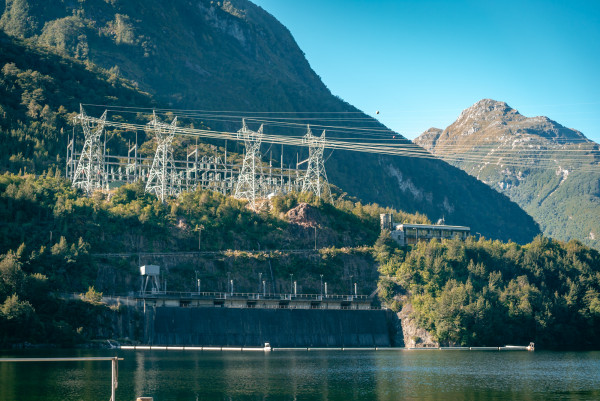World's shift to carbon-neutral is great opportunity for the region. By General Manager Development, Guy Waipara
 Southlanders have a well-earned reputation for being enterprising, resourceful, and 'getting stuff done' – the attitude which made the Southland Plains one of Aotearoa's most productive agricultural bases and, as the world shifts to a low-carbon future, is turning the region's renewable energy advantage into promising new opportunities.
Southlanders have a well-earned reputation for being enterprising, resourceful, and 'getting stuff done' – the attitude which made the Southland Plains one of Aotearoa's most productive agricultural bases and, as the world shifts to a low-carbon future, is turning the region's renewable energy advantage into promising new opportunities.
You'll catch a glimpse of this just north of Invercargill, in a place called Makarewa. Amid the dairy and meat operations you'd expect to see in a rural setting like this, something very different is being planned - a huge carbon-neutral data centre, covering an area the size of five rugby fields.
If this feels a little out of place for Southland, it won't for very long. The region's supply of green energy is increasingly shaping up as a premium product to match its pastures, which have underpinned the southern economy since the 1880s. Leveraging the opportunity will require a lot of energy but Southland is well positioned to deliver on that.
The region is home to Manapōuri, one of the most productive hydropower stations anywhere in the world. Along with the highest rainfall in New Zealand, Southland has huge potential as a source of renewable energy from wind turbines. Invercargill is the second windiest city in the country and the suitability of land for wind farms gives Southland a strategic advantage as technology, climate pressures and consumer preferences change worldwide.
The impending closure of the Tiwai Point aluminium smelter will free up renewable electricity for deployment in Southland's productive industries from 2024. It couldn't come at a better time.
Just as the rise of China's middle class helped drive the dairy boom since the 1990s, global demand for products and services made from renewable energy could well drive Southland's economy and prosperity for the foreseeable future.
In fact, it's already under way. The data centre in Makarewa is being planned for Southland because large global technology companies require as much of their data as possible to be stored and processed with renewable energy. There are very few places in the world where the right balance of climate, renewable energy and land can support these facilities – Southland is one.
Makarewa is also the proposed location for New Zealand's first carbon-neutral, plant-based beverage factory. The plant could be operational by the end of 2022, producing oat milk for the growing market in non-dairy alternatives. For premium products favoured by conscious consumers like oat milk, a carbon-neutral supply chain is important and a significant driver of purchasing decisions.
Helping make carbon-neutral supply chains for primary product exports is one of the most important economic roles for Southland's renewable energy. Meridian is currently working with primary processing factories across the South Island to convert their process heat from coal to electricity. As well as removing a good chunk of carbon emissions from our atmosphere, the electrification of process heat will enable more primary producers to leverage growing carbon-neutral consumer markets in everything from fresh mushrooms to butter.
That's just the beginning. Domestic and international markets for green hydrogen, an emissions-free fuel generated by passing electricity through water, are set to take off.
Countries like Japan and South Korea are pinning their decarbonisation strategy on a massive scale uptake of green hydrogen. Domestically, our heavy transport sector and industrial-use cases, such as fertiliser, are also assessing how they switch from fossil fuels.
Producing green hydrogen in Southland has the potential to support an employment base after the departure of the aluminium smelter at Tiwai Point.The idea has already been met enthusiastically by government and regional stakeholders keen to see Southland's energy continue to be a driver of opportunity and wealth in the region.
Currently Meridian is working with Contact Energy on a feasibility study which we plan to release in July. Part of this study is how such a plant could provide demand response, turning down production during dry years when hydro lakes are lower. This would make a significant contribution to supplying electricity to homes and businesses in dry years and reduce the need for thermal generation to make up the difference.
However Southland's renewable energy advantage is put to work, it's clear there are options for the region today that simply weren't there in the past.
In a world where renewable energy is valued more and more every year, it's an advantage for Southlanders, and all New Zealanders, of which to be immensely proud.
This article was originally published on 2 July 2021 NZ Herald